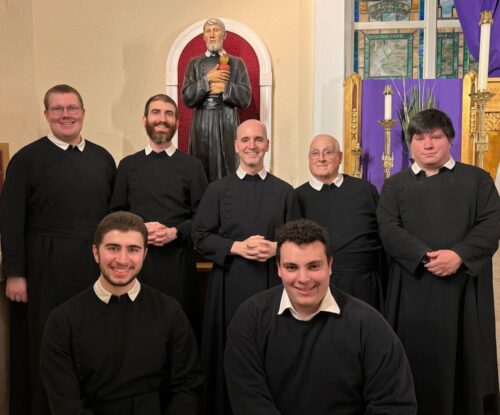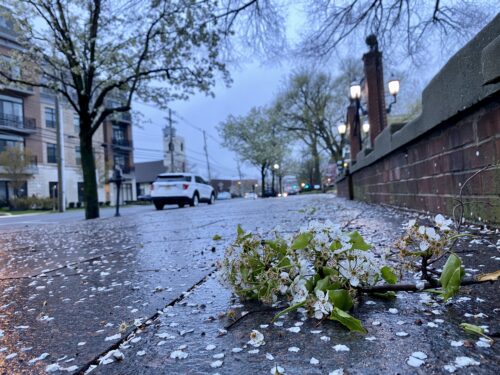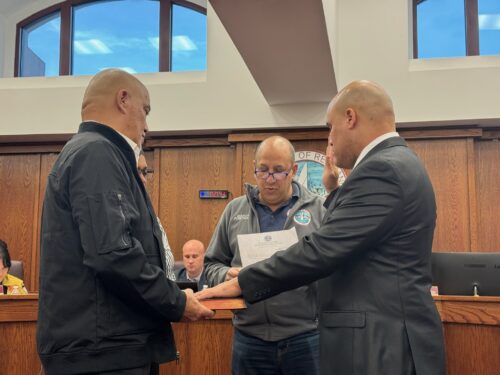
By JOHN T. WARD

Then again, the matter could be headed to court if the hybrid approach fails appease the library’s next-door neighbors, whose lawyer continued to imply that he’d sue if anything less than an abrupt wall along the library’s Navesink River frontage is constructed.
“The merits of the living shoreline are neither here nor there,” Michael Vitiello, the attorney for the Corinthian Cove condos, told the council before it voted on the issue. “My clients feel that if you remove the bulkhead… we are no longer going to have lateral support for our earth.”
The threat of legal action was no small matter, borough officials maintained, because its potential ramifications would go beyond the possibility of financial damages to include the possible loss of the entire library property.
At issue, said borough Attorney Dan O’Hern, was the wording of the 1937 deed that transferred the West Front Street property from the estate industrialist Sigmund Eisner. A condition in the document required that the Navesink River bulkhead be “maintained in good repair.” Otherwise, the property is to be sold, with the proceeds given to Harvard University.
Here’s the deed: Eisners deed house to library
In addition, O’Hern said, the town’s insurer, the Municipal Excess Liability Joint Insurance Fund, had informed the borough that removal of the bulkhead would be viewed as an “intentional act” that would make coverage of any injury or property damage claims “extremely unlikely.”
O’Hern said he was professionally obligated to advise the council to replace the bulkhead.
But whether his was an overly literal interpretation of the deed, and whether there might be ways around its wording, occupied much of the three-hour council meeting. Borough resident Stephen Mitchell accused O’Hern of using “scare tactics” to drum up support for a bulkhead.
O’Hern, however, alluded to the fact that five of the six council members to whom he answers had expressed support for a living shoreline approach, rather than a bulkhead.
“They’d probably prefer that I gave a different opinion, frankly,” O’Hern said.
Councilwoman Cindy Burnham, the lone Republican on the governing body, called for the measure to be tabled, so she could reach out to Harvard – as Mayor Pasquale Menna said he had done, without getting a response. But her motion failed to gain a second.
In May, the council authorized the issuance of a $566,000 bond to cover the combined cost of replacing both the library bulkhead and the one at the north end of Prospect Avenue, a project environmentalists did not oppose because of slope and erosion issues. The resolution specifically authorizing the library bulkhead needed immediate action, town officials said, so a single contract could be issued for both projects, thus saving the town money.
Local environmentalists, backed by the American Littoral Society and scientists at Stevens Institute in Hoboken, have previously offered to build a “soft” shoreline, which they contend would be better both for storm protection and animal life. And the library project could be done at no cost to the town, they said.
The borough Environmental Commission also urged the council to put the brakes on the bulkhead plan in order to conduct an engineering study.
At the urging of Councilman Ed Zipprich, an earlier draft of the resolution at issue was replaced Wednesday afternoon with one that called for the town to look for a bulkhead solution that incorporated the most environmentally-sensitive components available. [Here’s the original resolution: RB Resolution 14-207 The revised version was not immediately available in digital form]
The hybrid approach was endorsed by Middletown resident Carl Alderson, a marine resources specialist with the National Oceanic and Atmospheric Administration, who said he had worked on tens of millions of dollars worth of shoreline projects, including one alongside the Fresh Kills Landfill in Staten Island.
“There are many ways to construct a living shoreline, and many ways to construct a bulkhead,” Alderson told the council. “In fact, a a living shoreline can incorporate a bulkhead.” A “stepped” bulkhead that achieves many of the aims of a living shoreline is also an option, he said.
Alderson urged the council to conduct a feasibility study to determine which approach might be best for thesite. It was not immediately clear after the 5-to-1 vote in favor of Zipprich’s proposal if one would be done, however. Burnham cast the lone “no” vote.
Among those who endorsed the bulkhead choice was 14-year-old Elijah Nishiura, a sophomore at Red Bank Regional, who arrived late to the meeting after getting off work at the nearby Jersey Mike’s sub shop.
Though he said he favored a living shoreline, Nishiura told the council – which had just an hour earlier had honored him as an “environmental ambassador” – that the library had been a big part of his life since he was a toddler, and that it should do nothing to jeopardize the deed.
“Having the library, that’s important to our town,” he said.





















